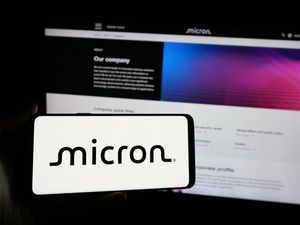
Whirlpool’s second quarter results disappointed investors, as the company reported a notable drop in revenue and a significant miss on non-GAAP profit expectations amid a challenging consumer environment. Management pointed to weak consumer sentiment, ongoing promotional pressure from foreign competitors due to delayed tariffs, and a shift in demand toward lower-priced products as key contributors to the underperformance. CEO Marc Bitzer described the landscape as “increasingly complex,” highlighting that the influx of Asian imports ahead of tariffs “created significant short-term disruption, adding to the promotional intensity throughout the second quarter.”
Is now the time to buy WHR? Find out in our full research report (it’s free).
Whirlpool (WHR) Q2 CY2025 Highlights:
- Revenue: $3.77 billion vs analyst estimates of $3.89 billion (5.4% year-on-year decline, 3% miss)
- Adjusted EPS: $1.34 vs analyst expectations of $1.74 (23% miss)
- Adjusted EBITDA: $284 million vs analyst estimates of $312.1 million (7.5% margin, 9% miss)
- The company reconfirmed its revenue guidance for the full year of $15.8 billion at the midpoint
- Adjusted EPS guidance for the full year is $7 at the midpoint, missing analyst estimates by 22%
- Operating Margin: 5.4%, up from 3.3% in the same quarter last year
- Market Capitalization: $4.79 billion
While we enjoy listening to the management's commentary, our favorite part of earnings calls are the analyst questions. Those are unscripted and can often highlight topics that management teams would rather avoid or topics where the answer is complicated. Here is what has caught our attention.
Our Top 5 Analyst Questions From Whirlpool’s Q2 Earnings Call
- David Sutherland MacGregor (Longbow Research) asked about the estimated volume of pre-tariff imported inventory and the expected timeline for normalization; CEO Marc Bitzer estimated 60 to 90 days of excess inventory and said normalization depends on tariff enforcement and competitor actions.
- Michael Glaser Dahl (RBC Capital Markets) pressed for visibility into competitor inventory levels and the impact on promotional dynamics; Bitzer acknowledged the challenge in precise tracking but said tariff delays have repeatedly prompted import surges, prolonging promotional intensity.
- Susan Marie Maklari (Goldman Sachs) inquired about the SDA segment’s resilience and margin outlook; Bitzer credited new products and strong direct-to-consumer sales, while CFO Jim Peters added that tariffs have impacted margins, but the segment remains robust.
- Eric Bosshard (Cleveland Research) questioned the effectiveness of pricing actions to offset tariffs; Bitzer replied that most required price increases were implemented in Q2 but noted the positive effect was masked by unfavorable product mix.
- Joshua Kenneth Wilson (Raymond James) explored the rationale behind the dividend reduction; CFO Jim Peters explained the move was to increase financial flexibility for debt reduction and future U.S. investments given the uncertain environment.
Catalysts in Upcoming Quarters
Looking ahead, the StockStory team will be watching (1) the pace at which excess imported inventory and promotional pressures subside as tariffs take full effect, (2) the initial sales traction and margin impact from Whirlpool’s major product launches, especially the new KitchenAid suite, and (3) evidence of stabilization or recovery in consumer sentiment and U.S. housing market activity. Progress on debt reduction, capital allocation, and direct-to-consumer growth will also be critical indicators.
Whirlpool currently trades at $85.61, down from $97.88 just before the earnings. In the wake of this quarter, is it a buy or sell? Find out in our full research report (it’s free).
High-Quality Stocks for All Market Conditions
Donald Trump’s April 2025 "Liberation Day" tariffs sent markets into a tailspin, but stocks have since rebounded strongly, proving that knee-jerk reactions often create the best buying opportunities.
The smart money is already positioning for the next leg up. Don’t miss out on the recovery - check out our Top 6 Stocks for this week. This is a curated list of our High Quality stocks that have generated a market-beating return of 183% over the last five years (as of March 31st 2025).
Stocks that made our list in 2020 include now familiar names such as Nvidia (+1,545% between March 2020 and March 2025) as well as under-the-radar businesses like the once-micro-cap company Kadant (+351% five-year return). Find your next big winner with StockStory today.
StockStory is growing and hiring equity analyst and marketing roles. Are you a 0 to 1 builder passionate about the markets and AI? See the open roles here.






